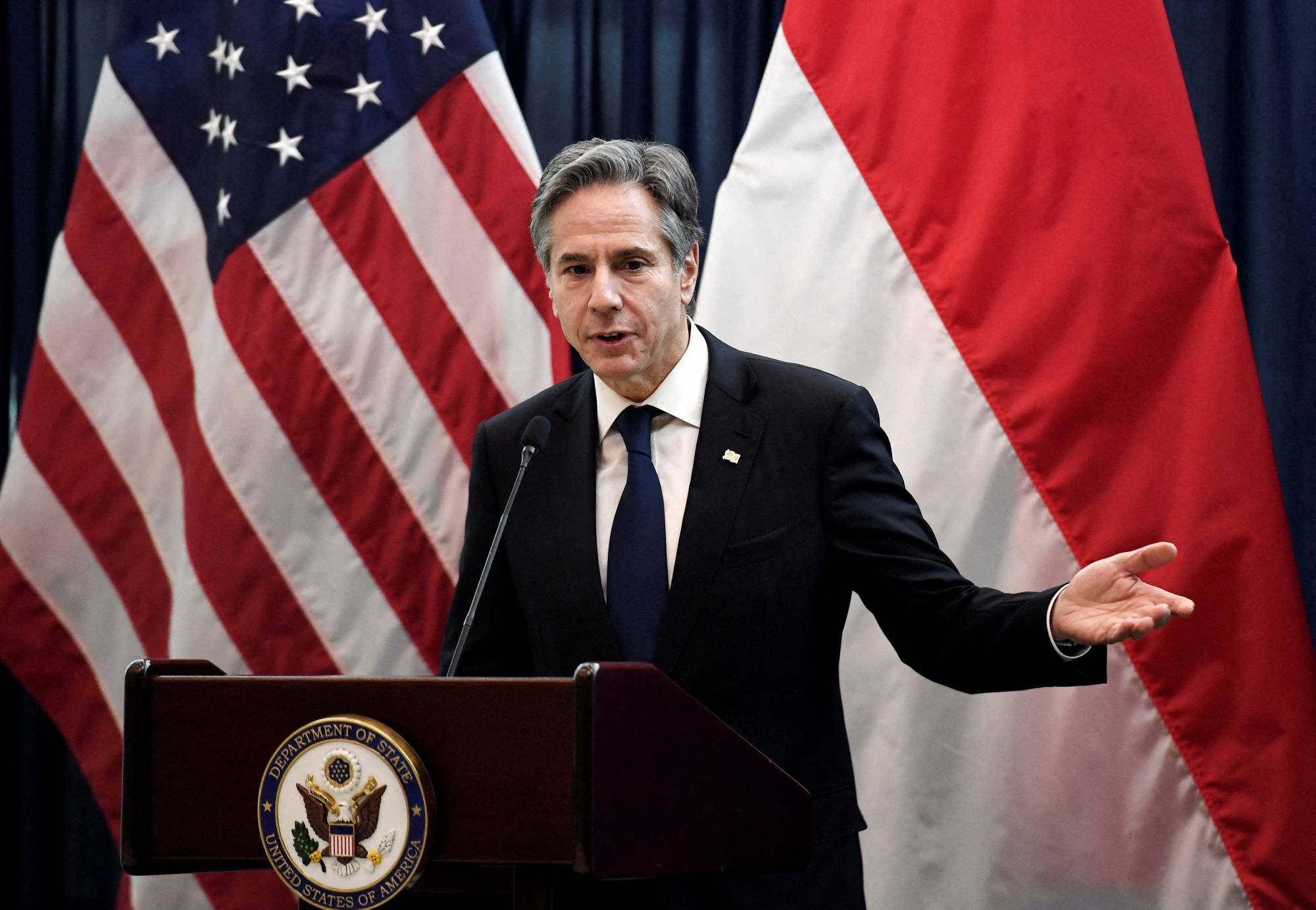Antony Blinken’s first official trip to Southeast Asia ended on a deflating note — cut short after a member of his traveling entourage tested positive for COVID-19. What’s most disappointing isn’t how the U.S. secretary of state left the region, though. It’s what he didn’t say while there.
Blinken spent a great deal of time talking about U.S. priorities, from China’s activities in the South China Sea to the coup in Myanmar. But he generally avoided the topic most local leaders would prefer to discuss: trade. The "Indo-Pacific economic framework” he touted in a speech in Jakarta on Tuesday remains maddeningly vague on details. What little has come out since U.S. President Joe Biden first raised the idea in October suggests the U.S. is hoping to enlist allies to secure supply chains, strengthen export controls, and write technical standards and rules to counter China. Asian nations understandably fear the whole endeavor is meant to distract from the administration’s unwillingness or inability to offer greater access to the U.S. market.
Such a dodge would be deeply unwise. Since Biden took office, the U.S. has recovered much ground lost to China in the region — strengthening security ties with allies and partners, regaining the diplomatic initiative on issues ranging from vaccines to climate, and reviving faith in U.S. leadership. At the same time, it continues to lag badly on measures of economic engagement. China trades nearly three times as much with the rest of the region as the U.S. does and far outpaces Washington in economic diplomacy. This week, the United Nations estimated that China would be one of the biggest beneficiaries of increased intraregional trade once the Regional Comprehensive Economic Partnership goes into effect next year.


















With your current subscription plan you can comment on stories. However, before writing your first comment, please create a display name in the Profile section of your subscriber account page.